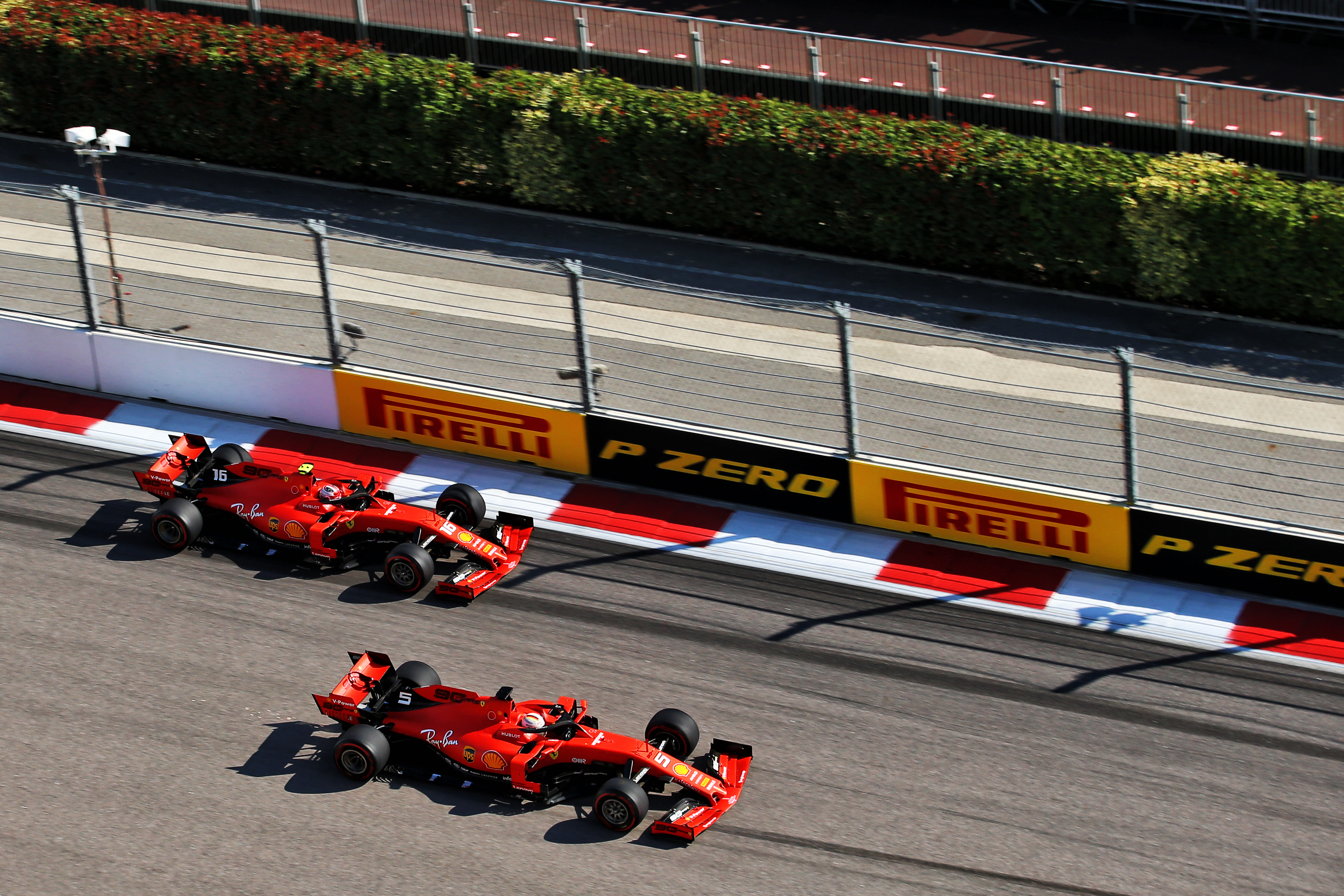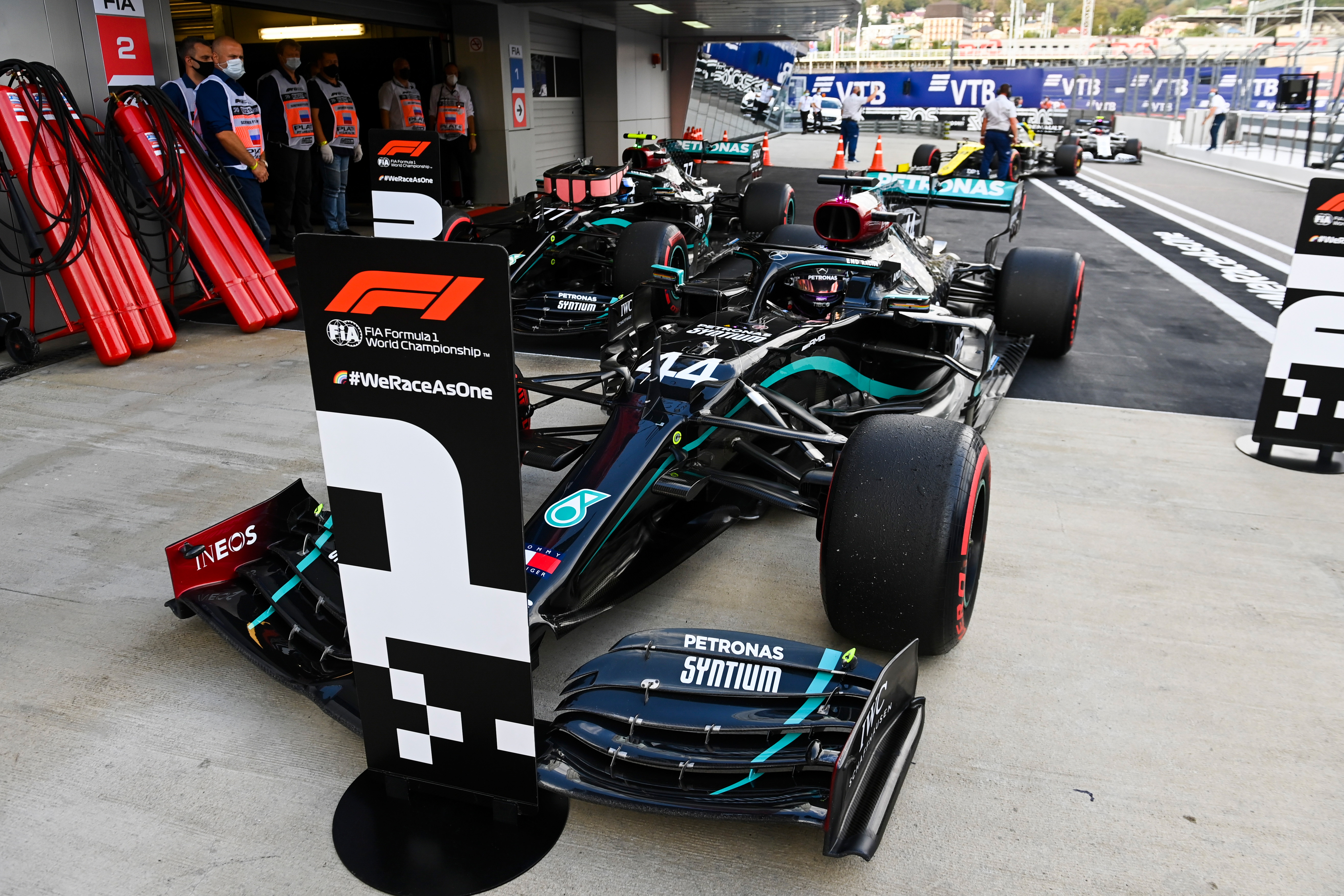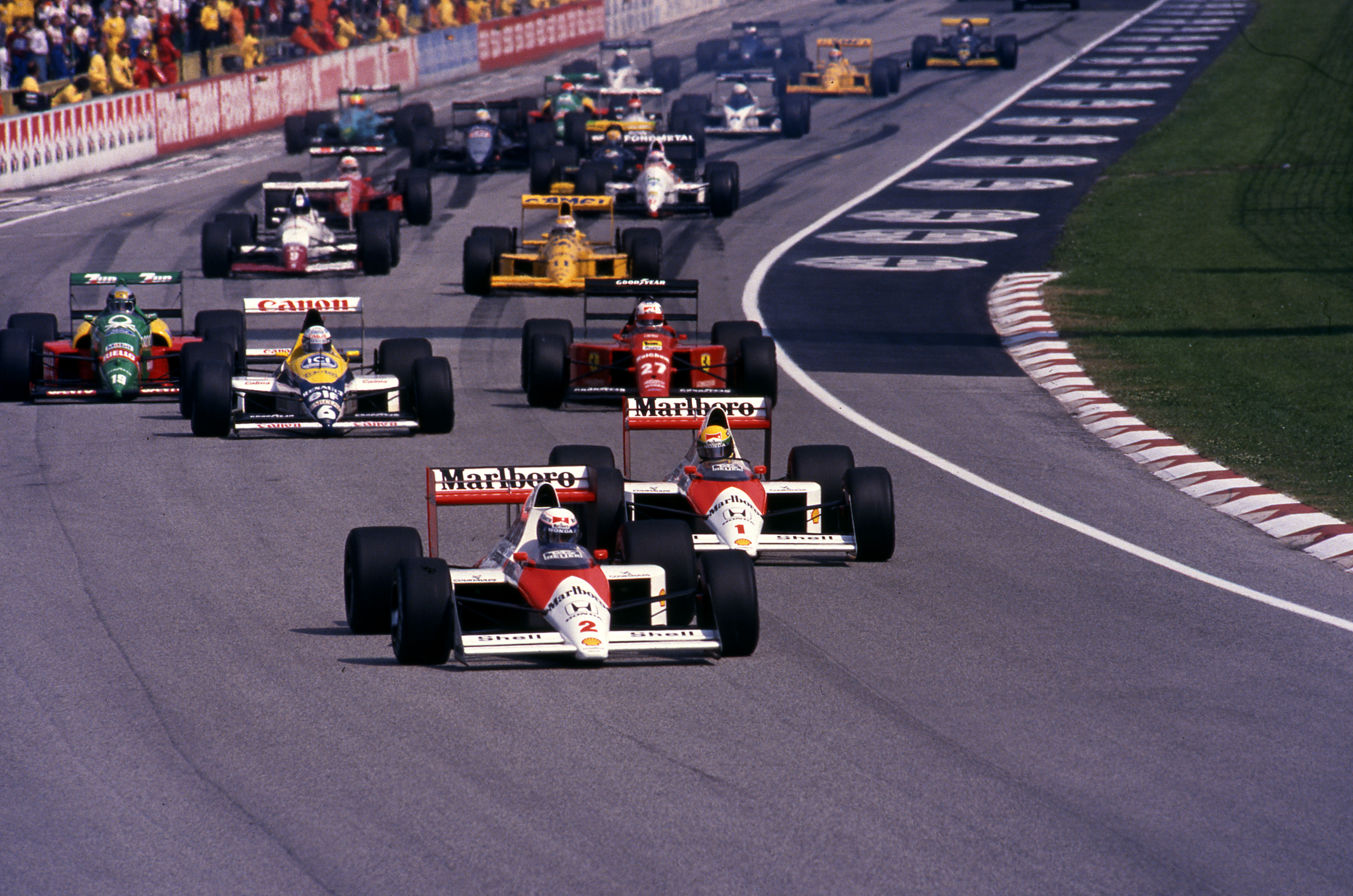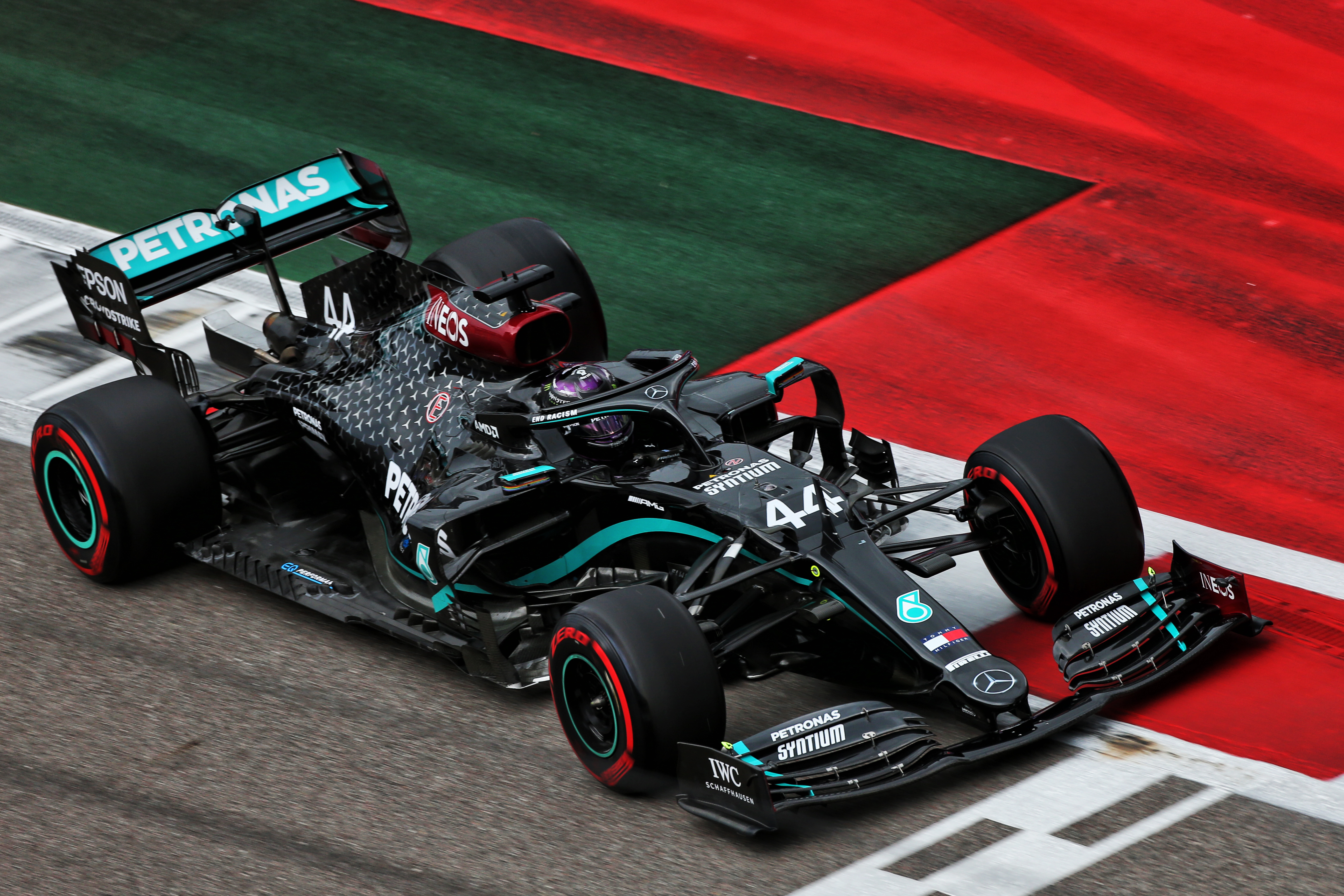The Russian Grand Prix is actually beautifully poised courtesy of that crazy high-jeopardy qualifying session.
The pre-race computations for Mercedes are complex, with a soft-tyred Lewis Hamilton starting from pole ahead of the medium-tyred Red Bull of Max Verstappen, and Valtteri Bottas directly behind on the clean side and on mediums too.
Those computations extend far beyond just the long, slipstreaming run down to Turn 2. But they most definitely begin there.
Rather like at Spa, starting from pole leaves you particularly vulnerable down to the first overtaking spot. It’s for this reason that the polesitting teams at the last two grands prix here – Mercedes in 2018, Ferrari last year – have gone into the race with a definite strategy to defend against that.

Ferrari’s plan last year was to use third-fastest Sebastian Vettel to slipstream his polesitting team-mate Charles Leclerc, then have Leclerc move to the left, conceding the corner to his team-mate, but simultaneously blocking the chasing second-fastest Hamilton from challenging Vettel. That part of Ferrari’s plan worked to perfection. The later implications of it descended into race-losing farce.
In 2018, Mercedes – having locked out the front row but suspecting that third-fastest Vettel would get a better start from the clean side of the grid than second-fastest Hamilton – had pole-setting Bottas swoop from the left to right-hand side of the track, thereby denying Vettel the tow and giving it to Hamilton instead.
That too worked perfectly, allowing Hamilton to repass the faster-accelerating Ferrari, gliding past it even before the braking zone. The two Mercedes were then able to block the width of the track on the approach to Turn 2.
This time around, Mercedes is in the Ferrari 2019 position, with one car on pole and the other third. Logically, the start strategy that suggests itself is that Hamilton help Bottas beat Verstappen into Turn 2.

But would he be prepared to surrender the corner to Bottas to help ensure that? It didn’t turn out so well for Leclerc last year, after all. The concomitant part of the deal then was that Vettel give the place back to his team-mate once the team cars were safely established 1-2.
That’s where the plan began to unravel – Vettel refusing to do so on the dubious grounds that, ‘I’d have beaten him into the turn anyway’ (ie, his start was so much better than Leclerc’s that he hadn’t needed Leclerc to surrender the position).
That’s what tends to happen to pre-race agreements between team-mates when it comes to the moment of competitive truth (see also Senna-Prost Imola 1989, pictured below). The slightest sliver of a loophole provided by circumstances will be taken.

Hamilton and Bottas have enjoyed a great relationship as team-mates these last four seasons, with Lewis even citing a less adversarial attitude from Bottas compared to Nico Rosberg contributing to him reaching a higher level of personal performance, and there is a high degree of trust between them.
But would Hamilton be prepared to voluntarily surrender the lead? On the day he’s chasing that career-equalling 91st victory? The opportunity for ambiguity and the controversy that can follow is obvious.
But let’s assume for a moment that Hamilton does agree to help Bottas’s cause in beating Verstappen away – but doesn’t actually have to surrender the lead to do so.
Ostensibly, that would seem to lay the way open for Mercedes to control the race, but actually it presents a second potential conundrum for the team. Hamilton’s soft tyres won’t have anything like the range of the mediums of Bottas (and Verstappen).

To get onto the faster one-stop strategy is marginal starting on softs. Pirelli estimates their range to be 14 laps, leaving 39 laps to do in the second stint – which is a bit of a push, even for the hards (which here is the C3 tyre, as Pirelli has brought its softest combination).
So if Hamilton is leading the first stint he is going to be trying to extend that stint for as long as possible in order to shorten the second stint. Which is potentially going to compromise a closely-following Bottas on mediums, both in terms of the overall fastest way to run Valtteri’s race – and to leaving him vulnerable to an attack or undercut by Verstappen. As such, Mercedes might be obliged to ask Hamilton to pull aside.
All because of going a couple of inches the wrong side of that Turn 18 white line … Controversy in Formula 1 only needs the slightest bit of daylight to rush through and those two inches provided it.



